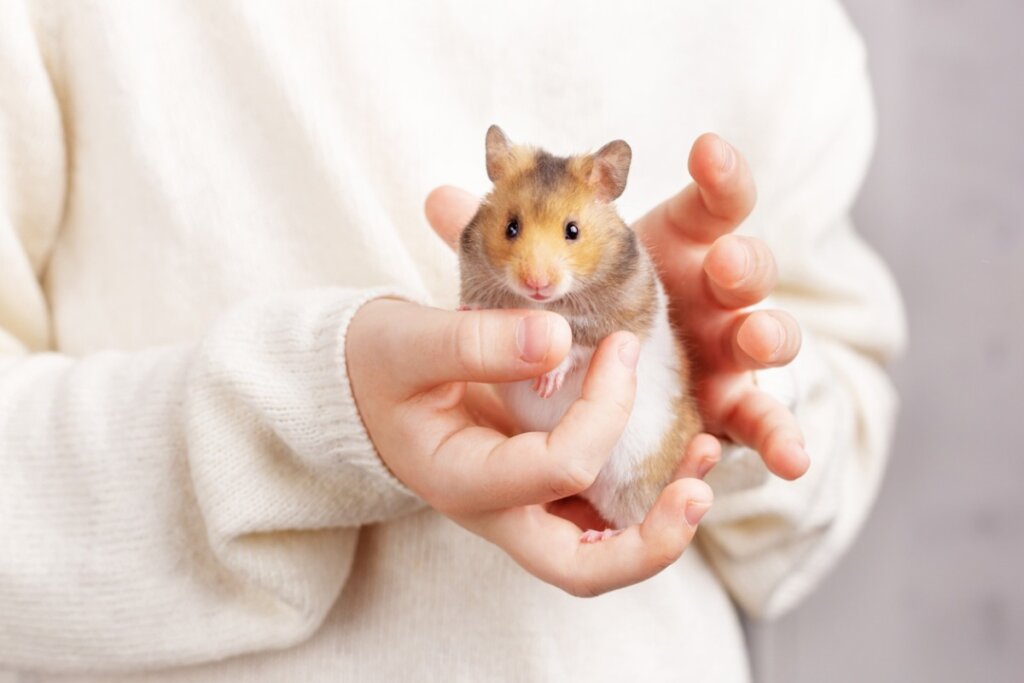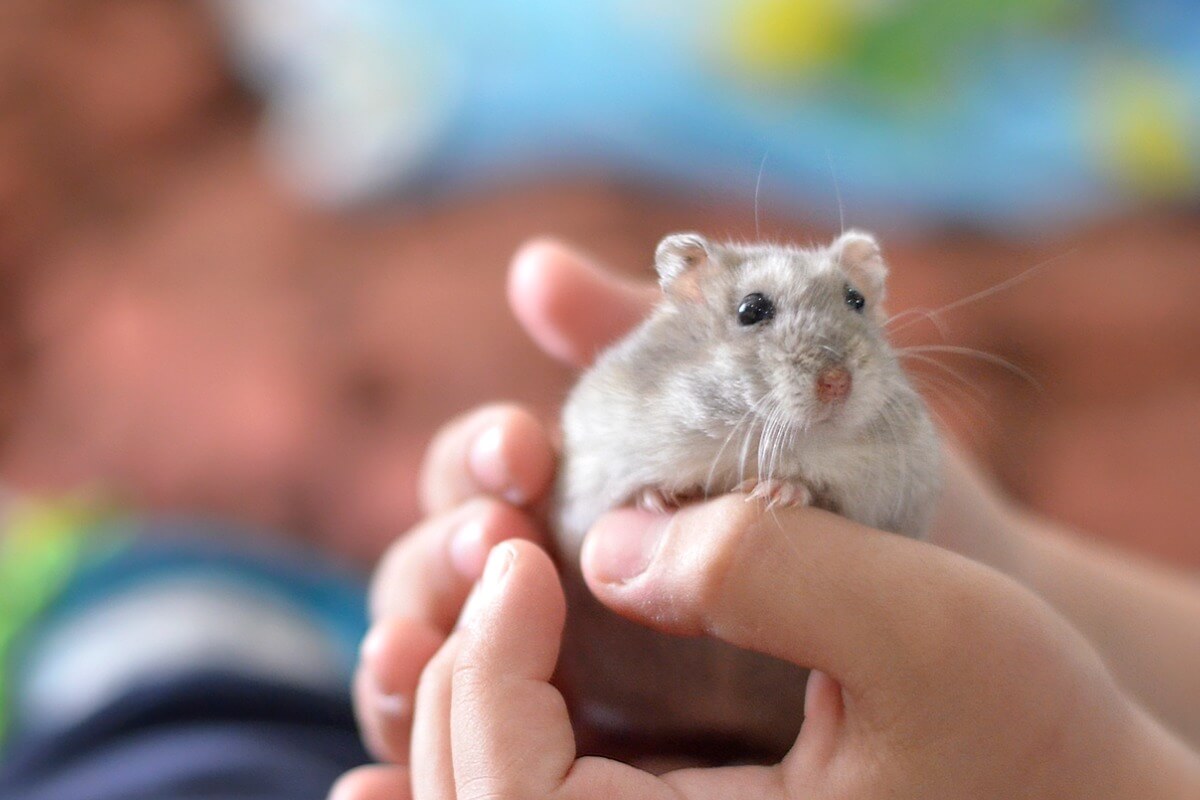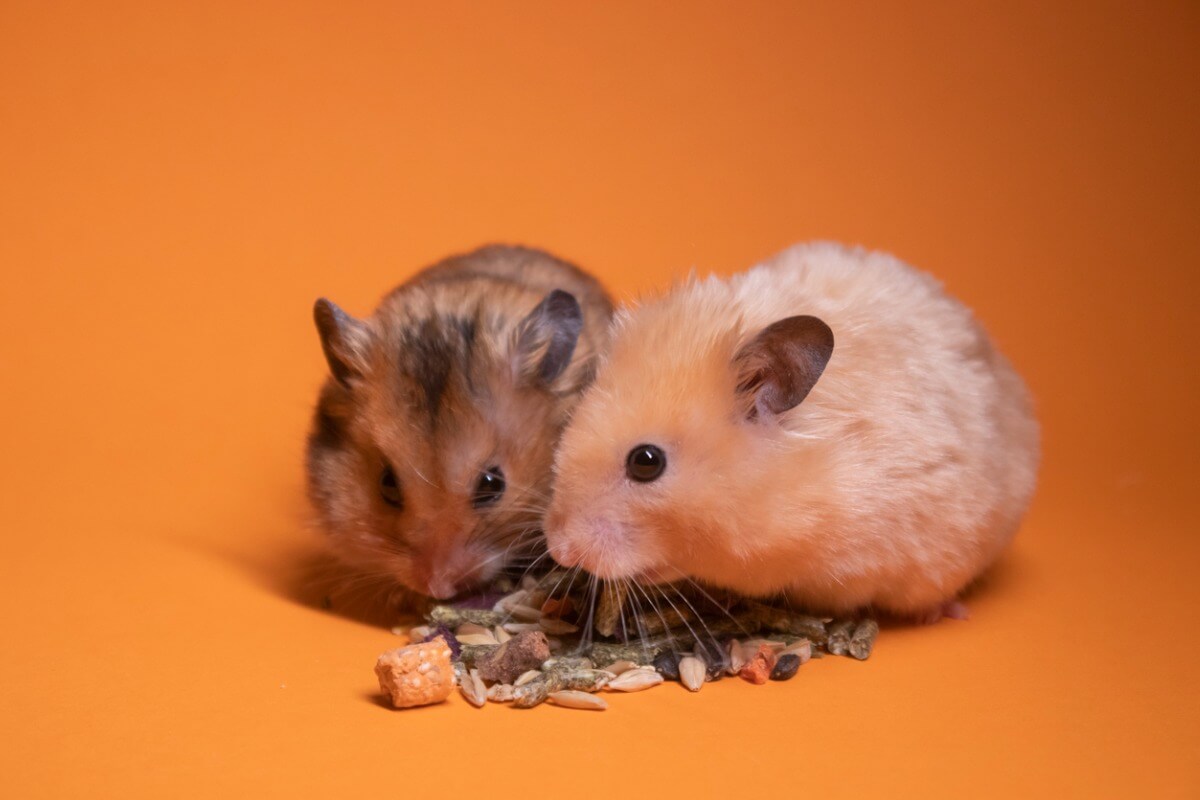The Best Way to Feed Your Hamster

Those who have a pet also acquire an enormous responsibility, as we’re in total charge of its care and well-being. Among the most important aspects for their well-being is to offer them the nutrients they need. Because of this, it’s essential to know how to feed your hamster if you have one of these cute rodents at home.
Hamsters are very cute animals that have gained popularity as pets in many parts of the world. Although it’s believed that, because they’re rodents, they can eat anything, the truth is that their diet must meet certain requirements. Therefore, in this article, we’ll tell you everything you need to feed them correctly and keep them healthy and happy. Don’t miss it!
What do hamsters eat in nature?
There are about 18 species of hamsters, all included in the family Cricetidae, subfamily Cricetinae, of the order Rodentia. In nature, these gentle rodents are omnivores, meaning that they eat both plants and animals. In this way, they can consume a variety of foods including different types of seeds and some small insects such as flies, cockroaches, ants, among others.
Hamsters usually store food in pouches in their cheeks and carry it to the burrows where they live. In this way, they ensure a constant source of food. They also transport their young in the same way.

How to feed your hamster at home
The best way to feed your pet hamster is to use a diet that resembles as closely as possible its menu in the wild. Because of this, it’s advisable to offer a variety of foods, as they need to supply their nutritional requirements of proteins, carbohydrates, fats, vitamins, and minerals.
What should you feed your hamster?
There are commercial food formulas for these pets that already come with all the nutrients they need. However, you should pay attention to the protein content. This should be between 15 and 25% for adequate development.
For females in gestation and breeding period, a good percentage of protein in their diet is also crucial. In this way, cannibalistic behavior and the death of the young are avoided.
Another important component should be fiber, which facilitates digestive motility. However, be careful not to overdo it in this case, so as not to generate more liquid feces or malnutrition problems.
In addition to commercial feeds, you should include a portion of fresh vegetables and fruits that provide moisture and other relevant nutrients. These include potatoes, cauliflower, spinach, lettuce, cucumber, carrots, apples, strawberries, kiwi, pears, among others. Occasional treats such as mealworms (a rich source of protein) or nuts (walnuts, hazelnuts, peanuts) can also be added to their diet.
How much does a hamster eat?
Quantities are also valuable when feeding your hamster. Ideally they need to consume the following:
- Regular food: 8 to 15 grams daily (about 1 tablespoon).
- Vegetables: 1 teaspoon per day.
- Fruits: 1 teaspoon, but with a frequency of about twice a week.
At the Technical University of Ambato, in 2016, different diets were evaluated for the development of the golden hamster (Mesocricetus auratus). One was based on vegetable meal (soybean), another on fish meal, and another was a mixture of both. The results obtained showed better characteristics in the growth stage of rodents fed with animal protein, which highlights the importance of this component in the diet of these mammals.
And what about water?
A very important factor that’s essential for a hamster is water. These rodents consume an average of 8 to 12 milliliters per day, which must be supplied with a suitable dispenser, which can be purchased at any pet store.
The water must be clean, fresh, and available at all times.
Prohibited foods when feeding your hamster
It’s also important to know the food that hamsters can’t eat, and thus avoid making mistakes that may harm their welfare. Here’s a list of prohibited foods for hamsters:
- Citrus fruits, such as oranges, lemons, tangerines, and grapefruit.
- Sweets, as they can cause problems in blood sugar levels.
- Onions, garlic, and peppers, because they affect the stomach.
- Processed and spicy foods.
- Almonds, because they can cause harm to some species of hamsters.
Similarly, you should pay attention to the plants or herbs that are offered, to ensure they don’t contain pesticides that can cause them harm.
Other considerations to feed your hamster correctly
To finish this article, we’d like to bring you other recommendations to nourish your little friend:
- Provide food in small, heavy ceramic bowls to prevent tipping.
- Control the portions of food offered in order to avoid overfeeding and excess weight.
- Offer products to chew and gnaw, because they have elongated incisors that never stop growing throughout their life. You can satisfy this need with branches of fruit trees, wood, cardboard, and coconut shells. Hay is also good and it provides fiber while maintaining proper tooth wear.
- Another important factor is cleanliness to avoid fungi and bacteria, especially with fresh food leftovers.
- Feeding a hamster is also an opportunity for fun, so you can choose to spread the food in their cage or hide it. In this way, you can keep them busy while foraging for their food.

We hope you’ve enjoyed our recommendations for feeding your hamster. However, if you still have any questions, then the best person to consult is the veterinarian. They’ll be able to provide you with the advice you need to ensure the well-being of your cute and cuddly rodent.
All cited sources were thoroughly reviewed by our team to ensure their quality, reliability, currency, and validity. The bibliography of this article was considered reliable and of academic or scientific accuracy.
- Altamirano, C. (2016). Evaluación de dietas proteicas de origen animal y vegetal en la eficiencia productiva del hámster dorado (Mesocrocetus auratus). [Tesis de grado, Universidad Técnica de Ambato]. https://repositorio.uta.edu.ec/bitstream/123456789/23688/1/Tesis%2058%20Medicina%20Veterinaria%20y%20Zootecnia%20-CD%20416.pdf
- Cajas, E. (2015). Evaluación de una dieta a base de harina de lombriz en la alimentación del hámster ruso, en la ciudad de Lacatunga, año 2015. [Tesis de grado, Universidad de Cotopaxi]. http://repositorio.utc.edu.ec/bitstream/27000/2770/1/T-UTC-00307.pdf
- Glenway Animal Hospital. Frequently asked hámster questions. Recuperado el 08 de julio de 2022, disponible en: https://www.glenwayanimalhospital.com/sites/site-3808/documents/Hamster%20FAQ.pdf
- Miljutin, A. (2011). Trends of specialisation in rodents: the hamsters, subfamily Cricetinae (Cricetidae, Rodentia, Mammalia). Acta Zoologica Lituanica, 21(3), 192-206.
